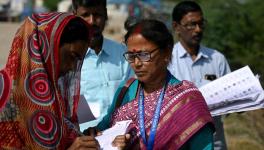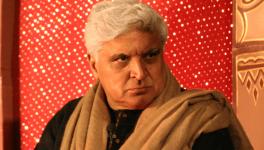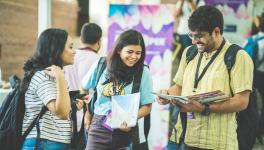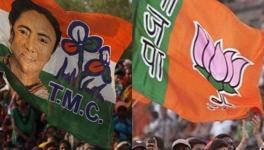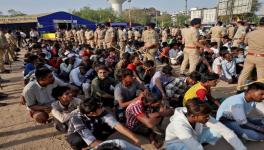Politics Trumps Public Health in Bengal Amidst Third Wave Surge
Representational use only.
The New Year came trailing the genesis of what has turned out to be a third Covid-19 wave of frightening proportions. And, as the sages say, it is going to get much worse before it starts getting any better. The whole country has taken a hit, but West Bengal is under the cosh more than most, and the administration is dealing with the situation through sheer ineptitude.
Let us start at the very beginning, by charting the numbers from the end of last year to 9 January. It won’t make for pretty reading. Despite the excesses over Christmas, the number of infections up until 28, 29 and 30 December were not worrying, at 439, 752 and 540.
Then the numbers started going north. On New Year’s Eve, the number jumped to 2,128, almost by a factor of four; and there was no looking back. On New Year’s Day, the number went up to 3,451. Over the next three days, the numbers were 4,512; 6,100; and 6,078.
There was a quantum jump on 4 January, the number of infections hitting 9,073. On 5 January, there was another jump, the number going up to 14,022. The trend continued over the next few days, with numbers reaching 15,421; 18,213; and, on 8 January, a Saturday, 18,802. On 9 January, the state registered its highest-ever infection tally at 24,287. Experts say this number could double.
The important thing about the numbers was that Kolkata has been contributing over a third of infections, with the city recording its highest tally on 9 January at8,712. Moreover, doctors, other health workers and policemen have been falling sick in droves. Alongside, in parts of the state, the positivity rate was climbing steeply. On 9 January, it was reported that Kolkata had the jaw-dropping positivity rate of 55 per cent, the highest of all districts nationwide.
Till quite a few days into the surge, Kolkata’s denizens were taking things in their stride—crowding into markets and moving around without even the pretence of wearing masks. It is customary to blame individuals—as feckless covidiots and worse. But we shall soon see that the burden of guilt lies in much greater measures elsewhere.
So, what was the government doing all this while? It came out with its response on 2 January. Prominent in the first slew of measures it announced was the closure of all educational institutions, allowing for 50% attendance of administrative staff. Online classes were resumed. Flights from Delhi and Mumbai were restricted; and, swimming pools, spas, beauty parlours and salons, wellness centres, entertainment parks, zoos, and tourist destinations were also shut. Inexplicably, on 8 January, beauty parlours and salons were allowed to reopen at 50% capacity.
The meaningless restriction favoured by most governments was made more stringent: the existing night curfew was extended from 10 p.m. to 5 a.m., as if people throng the streets at night infecting each other. Suburban train services were to continue, but only at 50%, a pretty much unenforceable condition, and till 7 p.m. In a rare show of rationality, the very next day the deadline was extended to 10 p.m. This will permit people who are allowed to be out to get home and avoid overcrowding.
Transport in the city was to remain normal, with the Metro operating at a 50% seating capacity. Markets, malls, cinemas, restaurants, theatres, bars, and government and private offices were allowed to keep functioning till 10 p.m. and at 50% capacity. A 50-person cap was imposed on wedding receptions and a 20-person cap on funerals.
There are several important issues that remain to complete this conspectus, but of those in a bit. What is apparent from the foregoing is that the government was and is committed to keeping life and the economy moving smoothly as far as possible, banking on marking out containment zones and, perhaps, the low fatality rate in the third wave. Nevertheless, it must be noted that the first sector that gets shut down is inevitably education (not just in Bengal), as if both the political class and society value it less than the viability of, say, the entertainment sector.
Prima facie, I can see no reason for the reopening of salons and beauty parlours (but not gyms) and the licence given to eating out, shopping at malls, and going out for shows. All these should have been shut for some time as a kind of circuit-breaker.
But the three remaining issues are more important in ascending order: the Bengal State Eligibility Test (SET); elections to four municipal corporations; and the Ganga Sagar Mela, which began on 8 January and will run till the 14th. The SET was held on 9 January 58,000 candidates appearing for it, out of 83,000 who had registered. Though detailed guidelines have been issued for safety, it is difficult to see why it could not have been postponed by a few weeks as most teachers had suggested. No rational considerations make themselves apparent.
Then there are the elections. The matter is in the Calcutta High Court, but, again, there seems to be no compelling reason not to postpone them for some time, especially since municipal elections are pending in 110 urban local bodies. These four could have been held alongside those. One cannot avoid the sense that Chief Minister Mamata Banerjee is giving free rein to her caprices.
But the most egregious decision was to allow the Ganga Sagar Mela to go ahead. Let us leave aside the fact that the Calcutta High Court green-lighted the fair at the eleventh hour—on 7 January—with the incomprehensible condition that it should be monitored by a three-member committee consisting of the Leader of the Opposition, the chairperson of the state human rights commission and a government representative.
Let us return to the government’s decision. In court, the government said it expected 5,00,000 pilgrims to attend the fair. There are other, higher estimates. The advocate arguing the public-interest petition put the number at 2 million. Whatever the number, in hundreds of thousands, the Ganga Sagar Mela is bound to act as a “super-spreader” event, just as the Kumbh Mela did in 2021.
Let us look at something else. On 7 January, the Joydeb Mela, an old fair with much of associated history was cancelled. It is heavily attended by members of the Baul community and lovers of folk music from around the world. It is held in Kenduli, Birbhum district, not far from Santiniketan.
So, why this discrimination. The government is aware that the Joydeb Mela is a small, niche fair and the Baul community and others are not likely to raise a ruckus over its cancellation. The Ganga Sagar Mela, on the other hand, is huge and has much greater symbolic capital. Banerjee was likely calculating that by cancelling it she could end up alienating a section of the Hindu community and give the Bharatiya Janata Party a handle to beat it with.
Covid-management, thus, became a casualty to political and electoral considerations. The ironic part is that it is highly unlikely that the Ganga Sagar Mela would have become an issue in the municipal elections. And, anyway, Banerjee could have put forward a very strong defence based on public health. Many people would probably have bought it.
As things stand, however, the public will have to wait fearfully for the rest of this month and the next to see just how badly Banerjee’s rash decision will affect the health of the citizenry across the state.
The author is an independent journalist and researcher. The views are personal.
Get the latest reports & analysis with people's perspective on Protests, movements & deep analytical videos, discussions of the current affairs in your Telegram app. Subscribe to NewsClick's Telegram channel & get Real-Time updates on stories, as they get published on our website.










